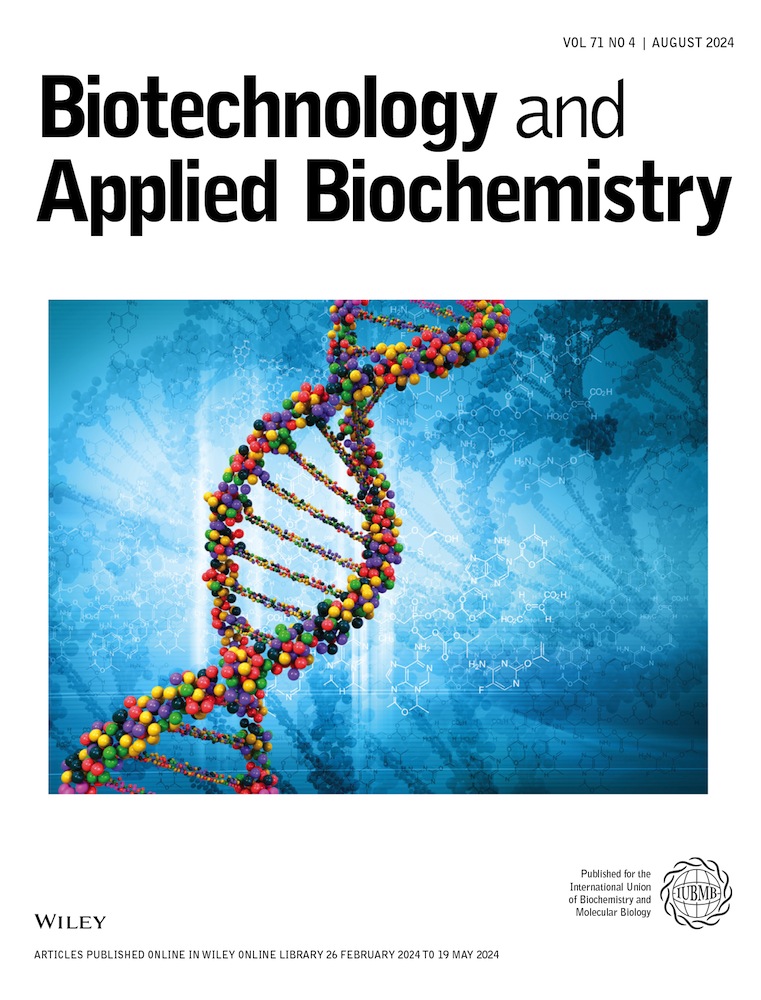维生素 D3 和二氧代哌啶酰胺衍生物对非酒精性脂肪肝体内斑马鱼模型脂质稳态、炎症通路和氧化还原失衡的联合影响
IF 3.2
4区 生物学
Q2 BIOCHEMISTRY & MOLECULAR BIOLOGY
引用次数: 0
摘要
肝脏损伤和代谢功能障碍是非酒精性脂肪肝(NAFLD)的主要特征,其特点是炎症、氧化应激和肝脏脂肪过度堆积。目前治疗非酒精性脂肪肝的方法有限,因此有必要探索新的治疗策略。二氧代哌啶酰胺衍生物,尤其是 DOPA-33,已显示出有效的抗炎和抗氧化特性,有可能为非酒精性脂肪肝提供治疗益处。本研究调查了维生素 D3(Vit D3)和 DOPA-33 在治疗非酒精性脂肪肝方面的综合潜力。网络药理学分析确定了维生素D3和DOPA-33调节非酒精性脂肪肝的关键靶点,强调了它们的潜在作用机制。在非酒精性脂肪肝诱导的斑马鱼模型中,Vit D3和DOPA-33能显著减少肝脏脂质积聚、氧化应激和细胞凋亡,显示出优于单独治疗的疗效。治疗还降低了活性氧(ROS)水平,减少了肝损伤,增强了抗氧化防御机制。此外,行为分析表明,治疗后的斑马鱼运动能力提高,体重增加减少。生化分析表明,甘油三酯(TG)和葡萄糖水平降低,氧化标志物得到改善。此外,组织学分析表明,肝脏脂肪变性和炎症有所减轻,脂肪生成相关基因和炎症介质的表达减少。最后,高效液相色谱法(HPLC)证实肝脏胆固醇水平显著降低,这表明联合疗法在解决与非酒精性脂肪肝相关的主要血脂异常方面非常有效。这些研究结果表明,Vit D3 + DOPA-33 可靶向脂质代谢、炎症和氧化应激相关的通路,为非酒精性脂肪肝提供了一种很有前景的治疗方法。本文章由计算机程序翻译,如有差异,请以英文原文为准。
Combined effects of vitamin D3 and dioxopiperidinamide derivative on lipid homeostasis, inflammatory pathways, and redox imbalance in non‐alcoholic fatty liver disease in vivo zebrafish model
Liver damage and metabolic dysfunctions, the defining features of non‐alcoholic fatty liver disease (NAFLD), are marked by inflammation, oxidative stress, and excessive hepatic fat accumulation. The current therapeutic approaches for NAFLD are limited, necessitating exploring novel treatment strategies. Dioxopiperidinamide derivatives, particularly DOPA‐33, have shown effective anti‐inflammatory and antioxidant properties, potentially offering therapeutic benefits against NAFLD. This study investigated the combined potential of vitamin D3 (Vit D3 ) and DOPA‐33 in treating NAFLD. The network pharmacology analysis identified key NAFLD targets modulated by Vit D3 and DOPA‐33, emphasizing their potential mechanisms of action. In NAFLD‐induced zebrafish models, Vit D3 and DOPA‐33 significantly reduced hepatic lipid accumulation, oxidative stress, and apoptosis, demonstrating superior efficacy over individual treatments. The treatment also lowered reactive oxygen species (ROS) levels, decreased liver damage, and enhanced antioxidant defense mechanisms. Moreover, behavioral analyses showed improved locomotion and reduced weight gain in treated zebrafish. Biochemical analyses revealed lower triglycerides (TG) and glucose levels with improved oxidative markers. Furthermore, histological analyses indicated reduced hepatic steatosis and inflammation, with decreased expression of lipogenesis‐related genes and inflammatory mediators. Finally, high‐performance liquid chromatography (HPLC) confirmed a significant reduction in hepatic cholesterol levels, indicating the effectiveness of the combination therapy in addressing key NAFLD‐related dyslipidemias. These findings suggest that Vit D3 + DOPA‐33 targets pathways involved in lipid metabolism, inflammation, and oxidative stress by offering a promising therapeutic approach for NAFLD.
求助全文
通过发布文献求助,成功后即可免费获取论文全文。
去求助
来源期刊

Biotechnology and applied biochemistry
工程技术-生化与分子生物学
CiteScore
6.00
自引率
7.10%
发文量
117
审稿时长
3 months
期刊介绍:
Published since 1979, Biotechnology and Applied Biochemistry is dedicated to the rapid publication of high quality, significant research at the interface between life sciences and their technological exploitation.
The Editors will consider papers for publication based on their novelty and impact as well as their contribution to the advancement of medical biotechnology and industrial biotechnology, covering cutting-edge research in synthetic biology, systems biology, metabolic engineering, bioengineering, biomaterials, biosensing, and nano-biotechnology.
 求助内容:
求助内容: 应助结果提醒方式:
应助结果提醒方式:


